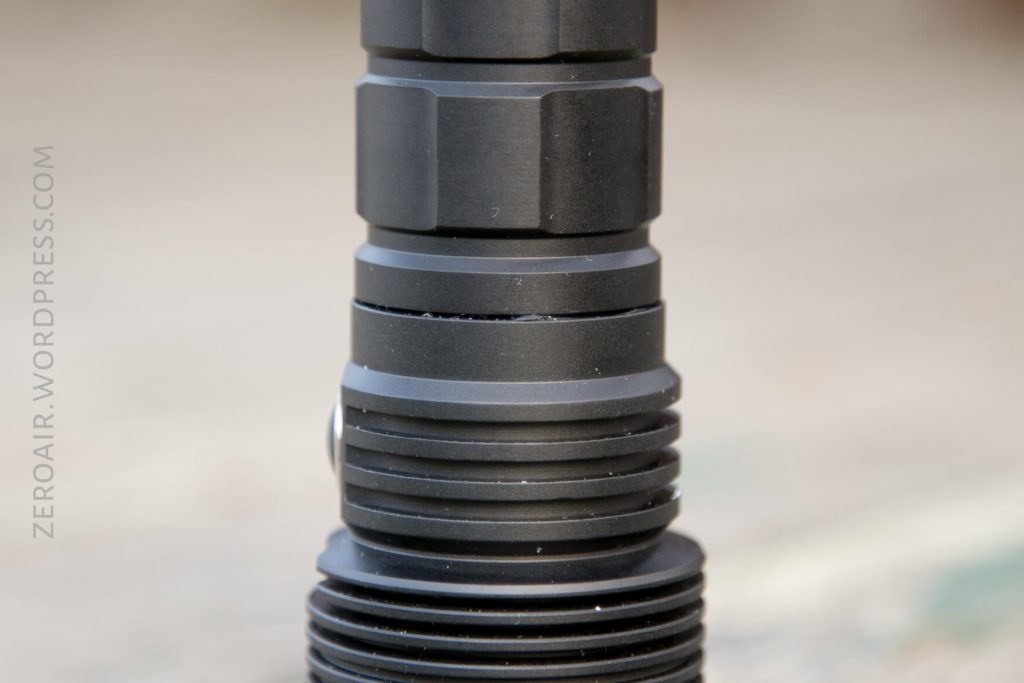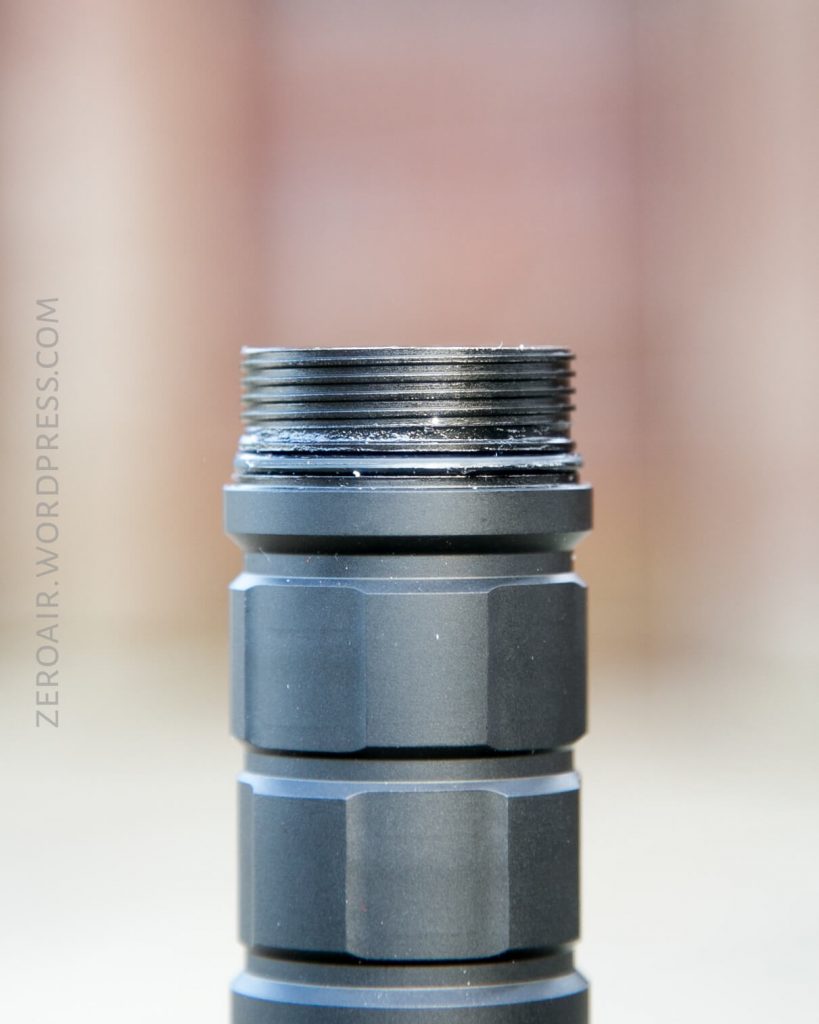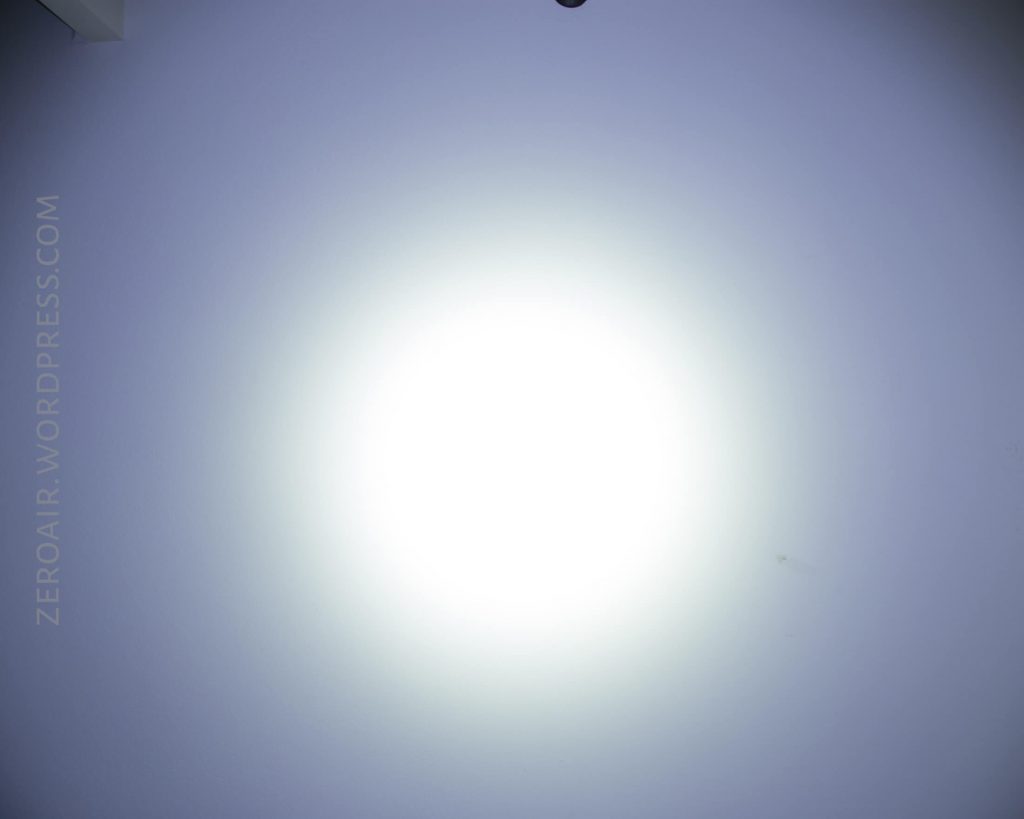Lumintop ODF30 Flashlight Review
The Lumintop ODF30 is a 26650 cell flashlight that uses a Cree XHP70.2 emitter for excellent output. Read on for more thoughts and testing!
Official Specs and Features
Here’s a link to the Lumintop ODF30 flashlight product page.
Versions
There’s only one version of this light!
Price
Looks like the going price of this light is around $70.
Short Review
I like the build of this light. Some small things like the body, with the alternating big blocks, just make it different enough to be interesting. The user interface is pretty good. I do wish it came with a cell, and it’s a little large to not also include charging.
Long Review
The Big Table
| Lumintop ODF30 | |
|---|---|
| Emitter: | Cree XHP70.2 |
| Price in USD at publication time: | $70.00 |
| Cell: | 1×26650 |
| Turbo Runtime | High Runtime |
| LVP? | Yes |
| Switch Type: | E-Switch |
| Quiescent Current (A): | ? |
| On-Board Charging? | No |
| Claimed Lumens (lm) | 3500 |
| Measured Lumens (at 30s) | 3480 (99.4% of claim)^ |
| Claimed Throw (m) | 280 |
| Candela (Calculated) in cd (at 30s) | 514lux @ 6.341m = 20667cd |
| Throw (Calculated) (m) | 287.5 (102.7% of claim)^ |
| All my Lumintop reviews! | |
^ Measurement disclaimer: Testing flashlights is my hobby. I use hobbyist-level equipment for testing, including some I made myself. Try not to get buried in the details of manufacturer specifications versus measurements recorded here; A certain amount of difference (say, 10 or 15%) is perfectly reasonable.
What’s Included
- Lumintop ODF30 Flashlight
- Nylon Pouch
- Lanyard
- Spare o-rings (2)
- Manual and paperwork
Package and Manual
The light ships in a standard Lumintop slip-fid cardboard box. GearBest puts an inventory sticker on the front, but it doesn’t cover any important info.

Here’s a not-great photo of the manual. It’s a good manual, including all the needed info, and a user interface flowchart.

Build Quality and Disassembly
Nothing is outstanding either good or bad about this light regarding its build quality. It’s good enough, just as it should be. I’m pleased that the threads on the tailcap are square-cut, and [just] adequately lubed, but I found that the cell tube couldn’t be removed from the head. Could be that it’s threadlocked. (More on that below).
But overall the build is fine. The head has a good bit of finning, which should help with heat management.

I like the body grip pattern. Not that it’s strictly useful for grip, but it’s neat. An alternating pattern of large blocks. Nice to see something unusual, but that isn’t also immediately horrible.

Here’s the reason I wanted to remove the cell tube. The o-ring that should waterproof this area looks to be sticking out just the tiniest amount, meaning this light could have questionable waterproofness. If these parts were separable, I could figure out what was going on, and replace that o-ring with one of the spares.
The bezel unscrews fairly easily, though there are no detents for a spanning tool to grab. Just press the bezel hard against a soft piece of wood or something and unscrew, and it should give. The reflector and that interesting red o-ring just come right out.
Size
Officially 120mm x 42mm x 32mm, and 133 without cell.
The ODF30 is approximately in line with the other similar 26650 lights I have. Seen below is the Thrunite TC20, the ODF30, and the Rofis MR70. Note that both these other two lights have onboard charging (and the MR70 even serves as a powerbank!) (And they also have similar throw.)
Retention
Lumintop includes a nylon pouch, which will hold the light only in a bezel-up direction. The pouch is a bit unusual in that it has only one loop which is permanently attached. You’ll have to thread this one on and off the belt every time (no velcro attachment).
The lanyard attaches on the tailcap, through the small hole seen below.

Power
The ODF30 is powered by a single 26650 cell. This doesn’t have to be any particular type: flat or button top, protected or unprotected will all work. It does need to be a capable cell though, because turbo draws over 6A. So, any good 26650 will work.
Below, observe the runtime on Turbo. The stepdown is gradual until around 4 minutes, where the light steps to around 2700 lumens (much higher than “High” mode) then steps down a few more times until the light shuts off.

The light claims to have intelligent thermal management, which should kick in around 55 degrees C, but I am not sure this graph corroborates that. The light decreases output over time, yes, but truly intelligent output thermal management would see the light increasing again to turbo (in my opinion!).
And here is High:

The switch is an indicating switch, so it’ll blink red when the cell voltage gets low. This happens around 3V. There’s an earlier warning too – at around 3.2-3.1V, the switch will be solid red. At around 2.6V, the light shuts off completely.
User Interface and Operation
The ODF30 has a single button. It’s a side, indicating, e-switch, and has a rounded dome-like shape. I’ve become accustomed to flat buttons, so this one is noteworthy in that regard. The switch is very clicky and moderately loud. The actual touchpad for switching seems a bit small for me (maybe it’s the dome giving me this impression). Anyway, it’s a fine clicky.

Here’s a user interface table!
| State | Action | Result |
|---|---|---|
| Off | Click | On (Mode Memory) |
| Off | Hold (~2s) | “Eco” mode (Very low) |
| Off | Long Hold (>4s) | Lockout^ |
| On | Click | Mode Advance (LMH) |
| On | Hold | Off |
| On | Double Click | Turbo |
| Eco | Double Click | Strobe |
| Strobe | Click | Eco |
^ Lockout of course starts in Eco, but doesn’t switch off when lockout has been enabled. Instead, it switches to a slow but bright flashing. The switch is capable of momentary in this setting. To exit lockout, the tailcap must be unscrewed and tightened.
Something about the switch on mine doesn’t seem quite right. I’m pretty used to UI’s and switches of all types, and… something just doesn’t always work on this one. I’m not sure if it’s the switch (likely) or something else electronic that makes things not work exactly correctly. Overall I can make the light do what it is supposed to do, but there are sometimes when it just seems like the light gets confused and things stop doing what you’d expect. Most often in these cases, the light just stays in the mode it’s in.
Modes
| Mode | Mode Claimed Output (lm) | Claimed Runtime | Measured Lumens | Tailcap Amps |
|---|---|---|---|---|
| Turbo | 3500 | 3m+2h5m | 3480 | 6.50 |
| High | 1800 | 2h15m | 1774 | 2.42 |
| Med | 540 | 5h45m | 564 | 0.59 |
| Low | 150 | 21h | 149 | 0.14 |
| Eco | 8 | 250h | ~ | 0.00 |
LED and Beam
Lumintop has a Cree XHP70.2 in this light. It’s a usual choice for this type light and not a bad one. The reflector is broad and shallow, and orange peel. There’s a nice centering gasket around the emitter.

“Eco” isn’t all that low. It’s fairly low, but not a beam you’d want to look directly into, for example. I like lower lows than what is offered here.
The beam has a good spot and rolls off pretty smoothly into spill.

Beamshots
These beamshots always have the following settings: f8, ISO100, 0.3s shutter, and manual 5000K exposure. These photos are taken at floor level, and the beam hits the ceiling around 9 feet away.
Tint vs BLF-348 (KillzoneFlashlights.com 219b version) (affiliate link)
I keep the test flashlight on the left and the BLF-348 reference flashlight on the right.

Random Comparisons and Competitive Options
Here’s a relevantly filtered page on parametrek.com. Of course the other two lights in this post are good competitors here. The Rofis MR70, which adds charging and a powerbank feature, and a side NW emitter is a great offering. The Thrunite TC20, which has onboard charging as well, is a nice competitor too. I like the build and the look of the Lumintop, and the indicating switch. The throw on the Lumintop gets a bit of an edge, I think.
Conclusion
What I like
- I like the build quality of the light, and the overall look is nice
- Output hits the rated lumens and throw
- Indicating side switch
What I don’t like
- Switch issue caused me to be frustrated with the UI
- Lacks onboard charging or other features of similar-sized lights
- Doesn’t include a cell (and there are already Lumintop branded cells!)
Notes
- This light was provided by GearBest for review. I was not paid to write this review.
- This content originally appeared at zeroair.org. Please visit there for the best experience!
- For flashlight-related patches, stickers, and gear, head over to PhotonPhreaks.com!
- Use my amazon.com referral link if you’re willing to help support making more reviews like this one!
- Please support me on Patreon! I deeply appreciate your support!


























Pingback: Lumintop ODL20C Flashlight Review – ZeroAir Reviews
Thanks to your review I bought it ODF30C. Before I had Convoy M3, M3 saw only good – to sell.
And now I’m happy